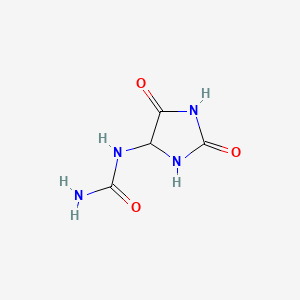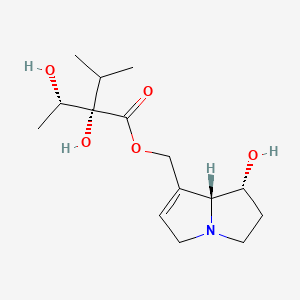Eastern Deciduous Forest
Comfery
Symphytum officinale
| http://tse1.mm.bing.net/th?&id=JN.JFRMmegFB04yd3uE5sfl7Q&w=300&h=300&c=0&pid=1.9&rs=0&p=0 |
Habitat: fields, woods. PE to GA. TX to ON. Dry fields, wet meadows and banks, pastures, and damp/marshy places.
Active Chemical Ingredient: allantoin C4H6N4O3 (promotes healing)
Lycopsamine: C15H25NO5
Parts Used: leaves and roots
Uses of Specimen:
Use the fresh or recently dried rootstock.
Infusion or Decoction: use 1 tbsp. root to 1 cup water. For infusion, steep 30 or more minutes; strain. Take lukewarm in the course of a day in mouthful doses.
Tincture: take 20 to 30 drops, 2 or 3 times per day.
Powder: use 1/4 to 1/2 tsp., 3 times per day or as directed by a doctor.
Use the entire plant except the roots, dried in the shade.
Decoction: boil 2 tsp. herb in 1 cup of water or milk.
Mixed tea: mix equal parts of silverweed, balm leaves and German chamomile flowers. Steep 1 tsp. of the mixture in 1/2 cup water. Sweeten with honey. Take 1 to 1 1/2 cups a day, a mouthful at a time.
Infusion: use 1 tsp. of the dried herb in 1 cup of boiling water. Cover with a saucer and steep for 30 minutes; strain.
Resourses:
 |
| http://pubchem.ncbi.nlm.nih.gov/image/imgsrv.fcgi?cid=204&t=l |
Lycopsamine: C15H25NO5
 |
| http://pubchem.ncbi.nlm.nih.gov/image/imgsrv.fcgi?cid=107938&t=l |
- Lantoin: promotes healing
Parts Used: leaves and roots
Uses of Specimen:
- root tea and weaker leaf tea considered tonic, astringent, helps with diarrhea.
- leaves and root poulticed to "knit bones"
- promotes healling of bruises, wounds, ulcers
- external application of the leaf is approved for the treatment of bruises and sprains
- root poultice approved for bruising, pulled muscles and ligaments, and sprians
- Many of them also claim that the herb is very useful in healing fractured or broken bones. It is possible that at some point of time the herb was used to heal the swelling and tenderness in the region of a fractured bone.
- When comfrey is applied topically over a fractured bone, its prime element allantoin simply disseminates into the tissues below and helps in speeding up the healing and closing processes. Allantoin is known to encourage cell growth and, thereby, mend damaged cells.
- When fresh comfrey leaves or roots are topically administered to sores, injuries or ulcers, the mucilage or adhesive agents present in the herb trickles out onto the damages skin. It first dries on the wound and then coagulates and contracts bringing the sides of the damaged skin closer and also slows down contagion at the place. In places where the injury is somewhat shallow, comfrey is effective in healing the skin leaving behind a small blemish.
- A poultice or balm prepared with comfrey roots may be used to heal an assortment of conditions, including blemishes, twists and strains, swellings, burns and phlebitis (inflammation of veins characterized by pain, swelling and change of skin color). Again, a decoction prepared with comfrey root or an infusion prepared with the leaves of the herb serves as an effective eyewash for tender, inflamed eyes as well as a
- cleanser for skin conditions like eczema, acne, psoriasis and boils.
- The leaves of the herb act as a comforting expectorant for dry coughs, bronchitis and pleurisy and are also used to cure tender throats and laryngitis.
Use the fresh or recently dried rootstock.
Infusion or Decoction: use 1 tbsp. root to 1 cup water. For infusion, steep 30 or more minutes; strain. Take lukewarm in the course of a day in mouthful doses.
Tincture: take 20 to 30 drops, 2 or 3 times per day.
Powder: use 1/4 to 1/2 tsp., 3 times per day or as directed by a doctor.
Use the entire plant except the roots, dried in the shade.
Decoction: boil 2 tsp. herb in 1 cup of water or milk.
Mixed tea: mix equal parts of silverweed, balm leaves and German chamomile flowers. Steep 1 tsp. of the mixture in 1/2 cup water. Sweeten with honey. Take 1 to 1 1/2 cups a day, a mouthful at a time.
Infusion: use 1 tsp. of the dried herb in 1 cup of boiling water. Cover with a saucer and steep for 30 minutes; strain.
Resourses:
- Comfrey: Symphytum officinale. (n.d.). Retrieved September 10, 2015, from http://www.herbs2000.com/herbs/herbs_comfrey.htm
- Foster, S., & Duke, J. (2014). A field guide to medicinal plants and herbs of eastern and central North America (3rd ed.). Boston: Houghton Mifflin.
No comments:
Post a Comment